Abstract
Eight pigeons pressed treadles for food reinforcers delivered by several multiple variable-interval schedules. The rate of reinforcement for responding during one component schedule was held constant at 30 reinforcers per hour. The rate of reinforcement for responding during the other component varied from 0 to 120 or 240 reinforcers per hour. The schedules were presented in different orders for different subjects. The rate of responding emitted during the variable component schedule varied directly with the rate of reinforcement it provided. The rate of responding during the constant component did not increase consistently when the rate of reinforcement obtained from the variable component decreased from 30 to 0 reinforcers per hr. The rate of responding emitted during the constant component decreased when the rate of reinforcement obtained from the variable component increased from 30 reinforcers per hour to a higher rate. That is, negative but not positive behavioral contrast occurred. The failure to find positive contrast is consistent with one of the predictions of the additive theories of behavioral contrast. Finding negative contrast has ambiguous implications for the additive theories.
Keywords: behavioral contrast, multiple schedule, variable-interval schedule, additive theory, treadle press, pigeons
Full text
PDF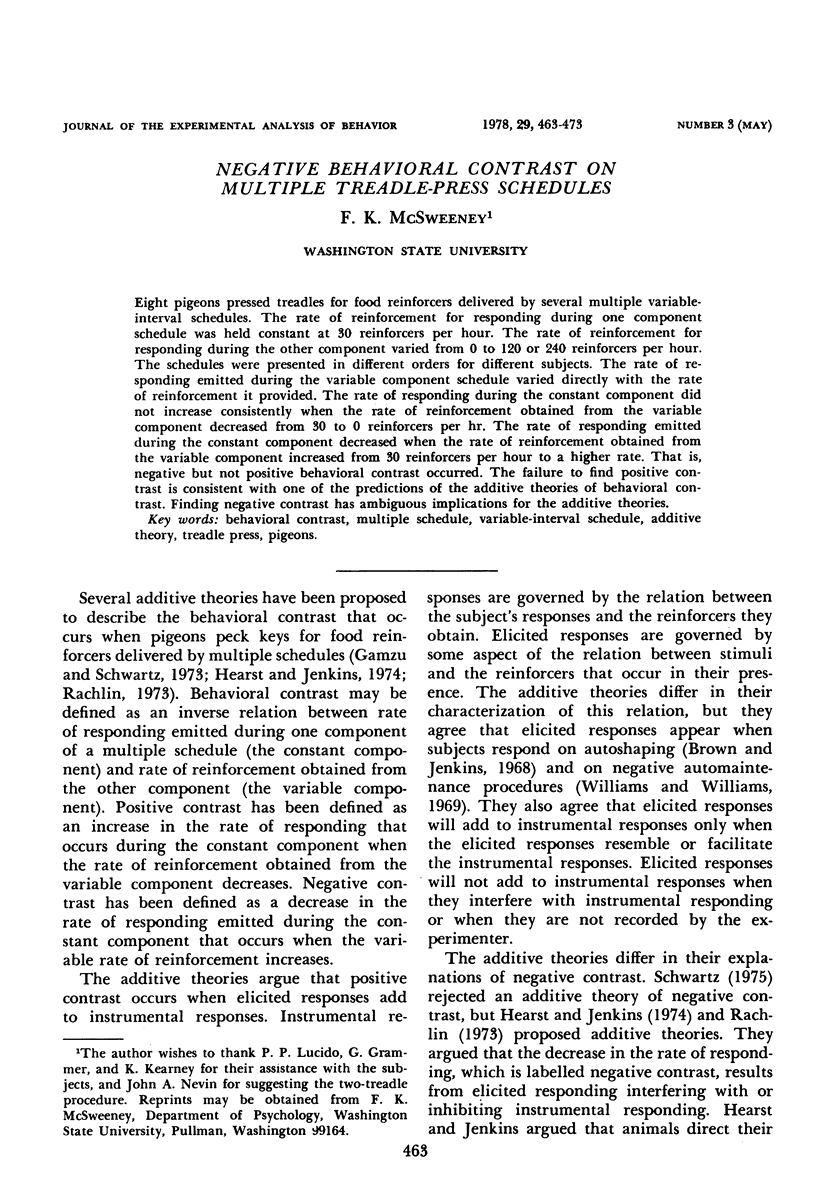
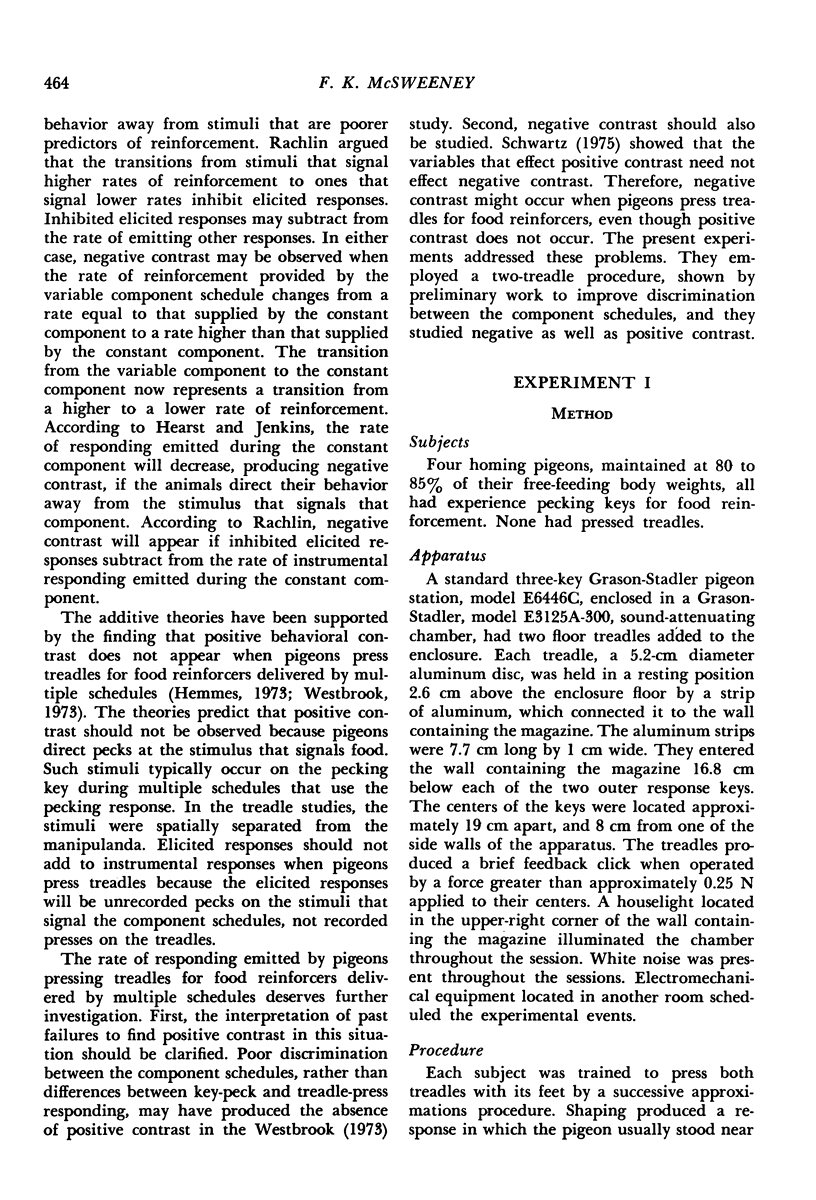
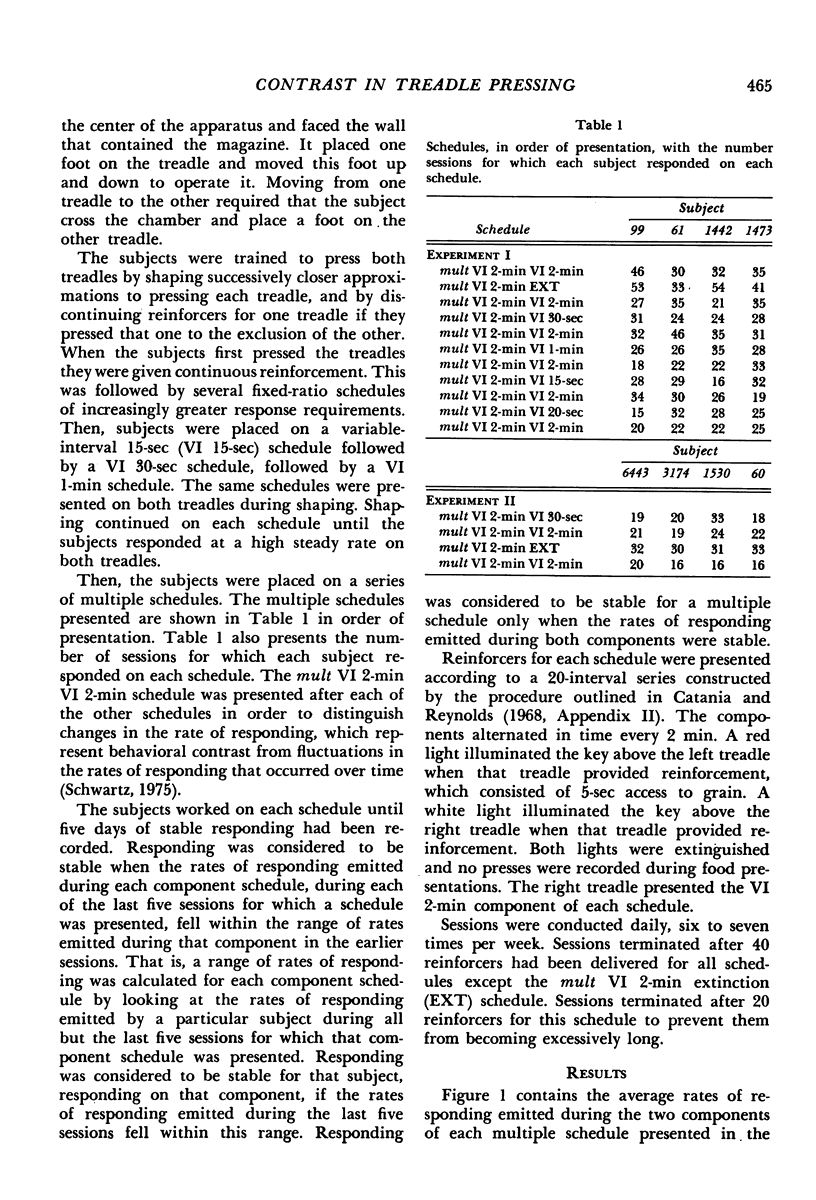
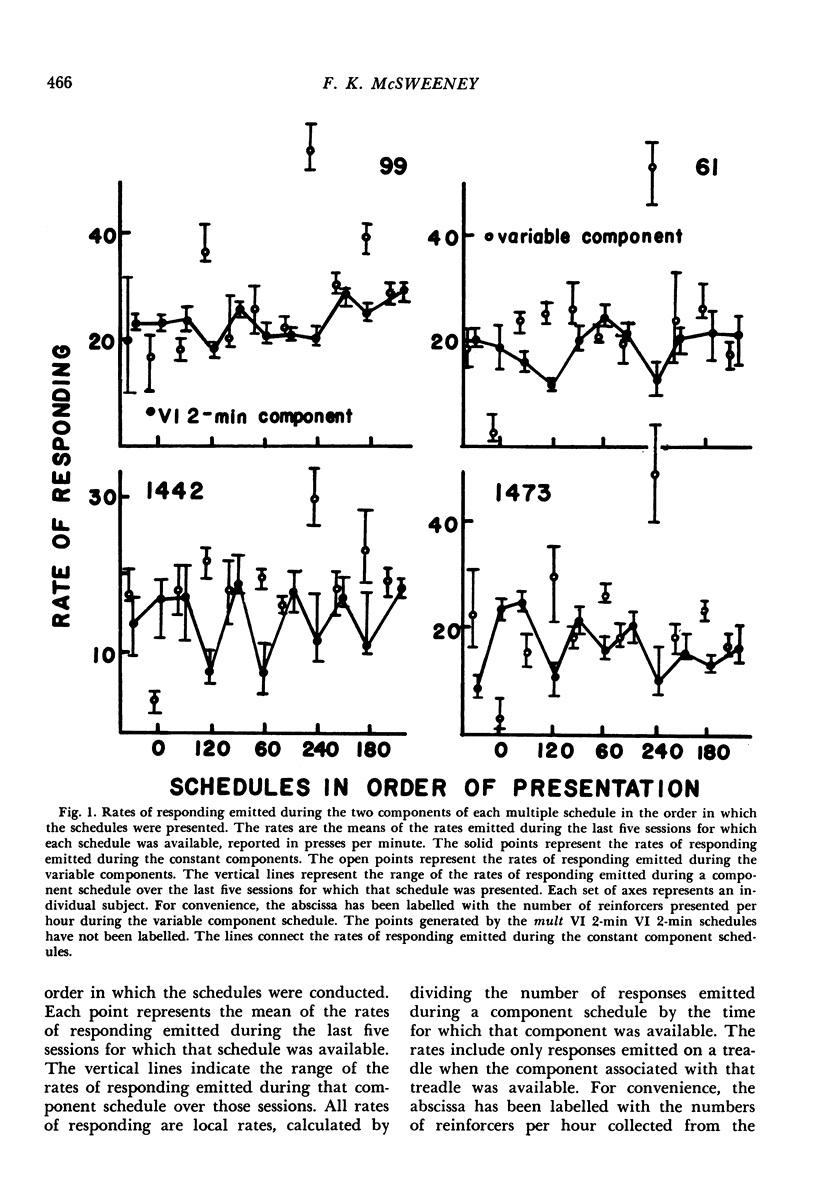
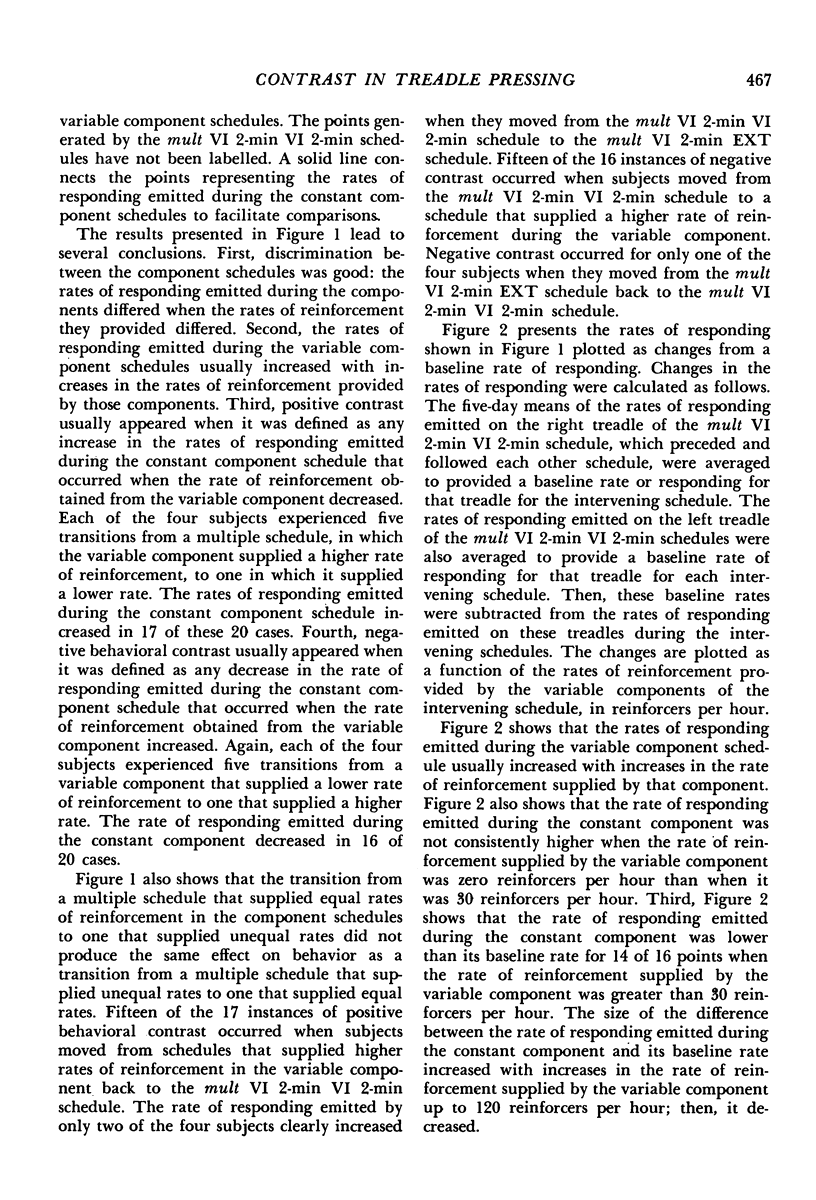
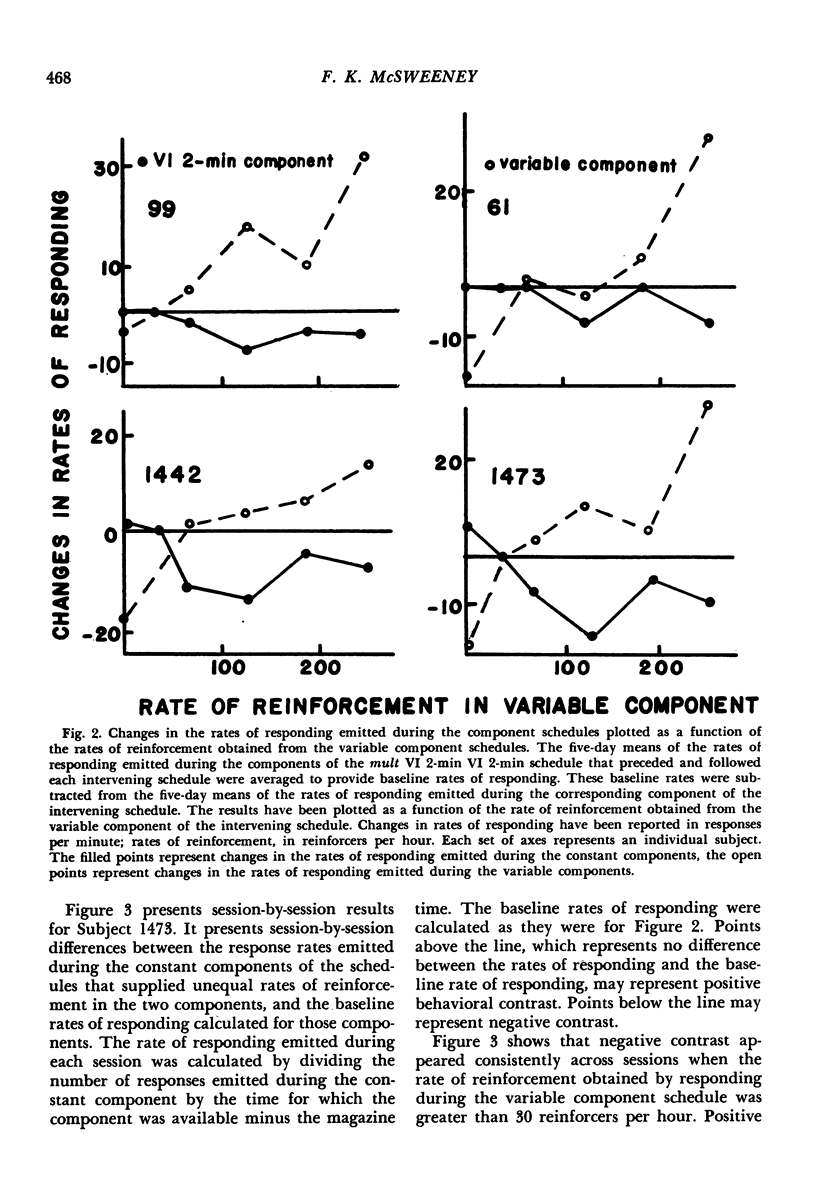
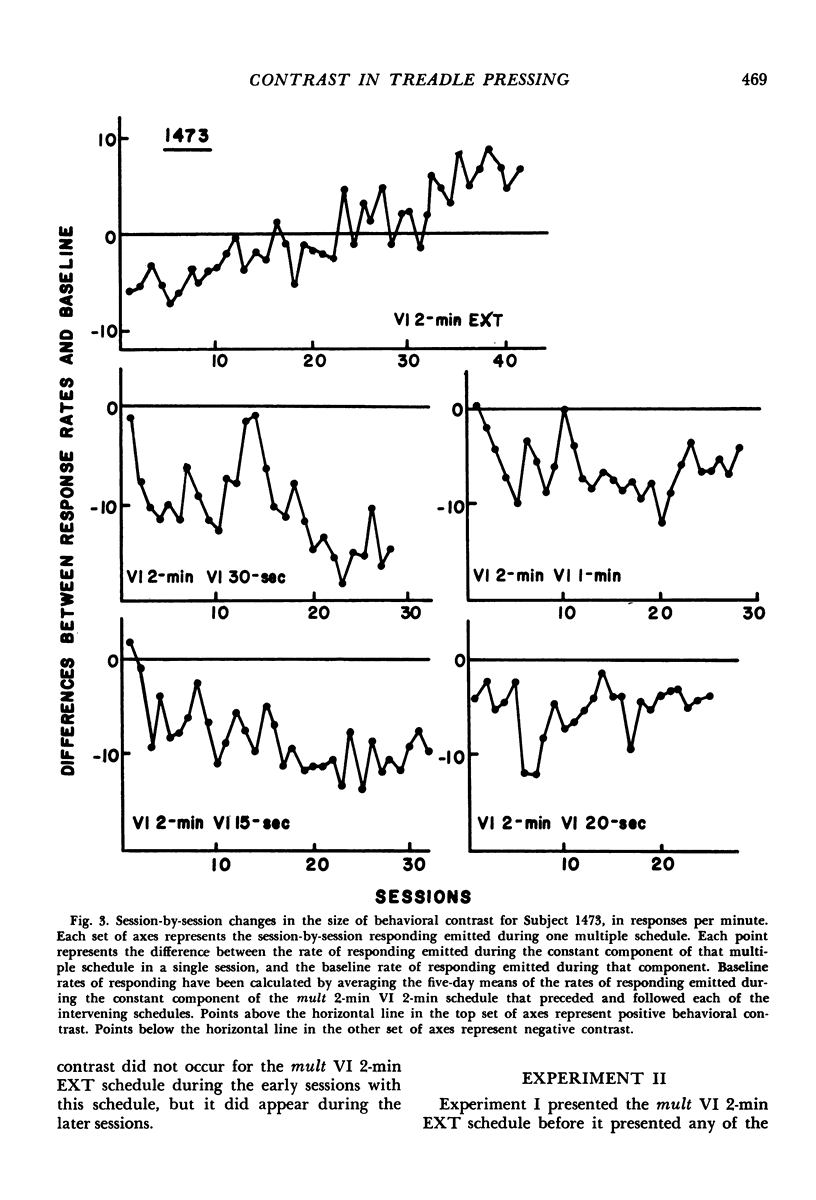
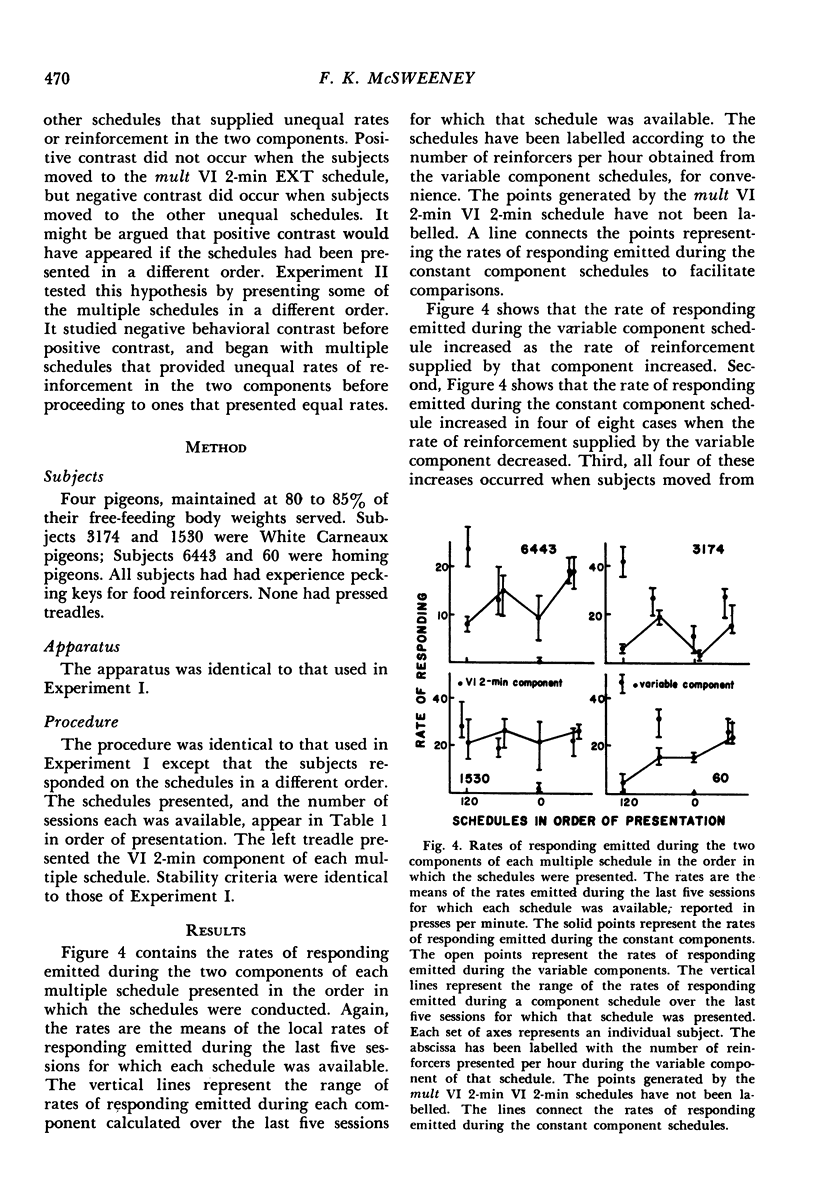
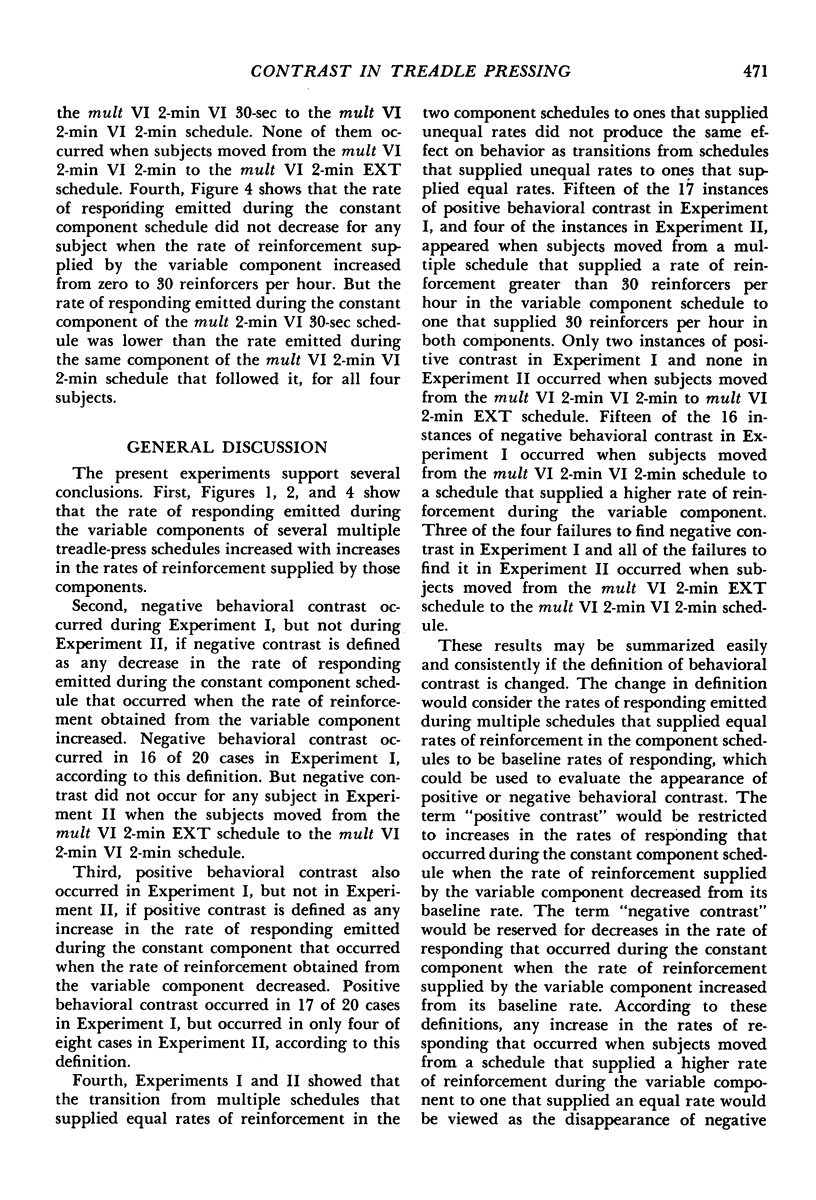
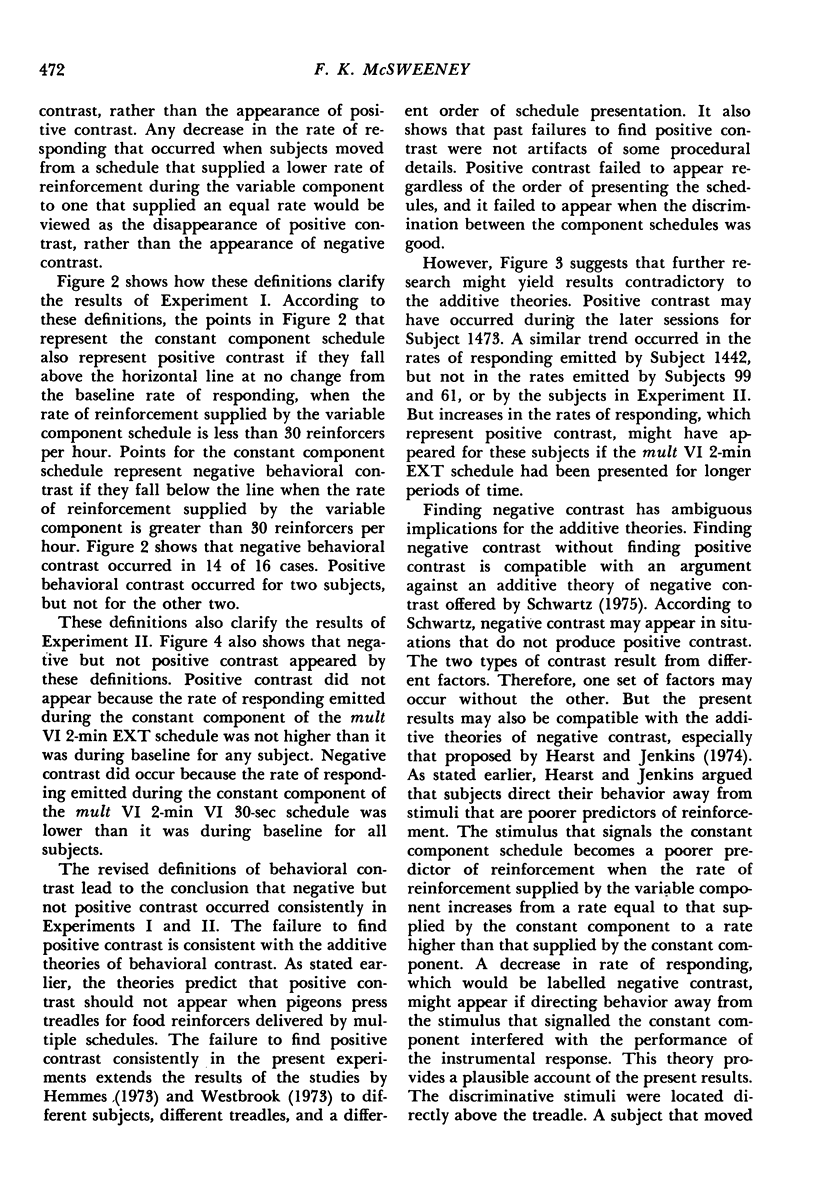

Selected References
These references are in PubMed. This may not be the complete list of references from this article.
- Brown P. L., Jenkins H. M. Auto-shaping of the pigeon's key-peck. J Exp Anal Behav. 1968 Jan;11(1):1–8. doi: 10.1901/jeab.1968.11-1. [DOI] [PMC free article] [PubMed] [Google Scholar]
- Catania A. C., Reynolds G. S. A quantitative analysis of the responding maintained by interval schedules of reinforcement. J Exp Anal Behav. 1968 May;11(3 Suppl):327–383. doi: 10.1901/jeab.1968.11-s327. [DOI] [PMC free article] [PubMed] [Google Scholar]
- Gamzu E., Schwartz B. The maintenance of key pecking by stimulus-contingent and response-independent food presentation. J Exp Anal Behav. 1973 Jan;19(1):65–72. doi: 10.1901/jeab.1973.19-65. [DOI] [PMC free article] [PubMed] [Google Scholar]
- Hemmes N. S. Behavioral contrast in pigeons depends upon the operant. J Comp Physiol Psychol. 1973 Oct;85(1):171–178. doi: 10.1037/h0034883. [DOI] [PubMed] [Google Scholar]
- Schwartz B. Discriminative stimulus location as a determinant of positive and negative behavioral contrast in the pigeon. J Exp Anal Behav. 1975 Mar;23(2):167–176. doi: 10.1901/jeab.1975.23-167. [DOI] [PMC free article] [PubMed] [Google Scholar]
- Westbrook R. F. Failure to obtain positive contrast when pigeons press a bar. J Exp Anal Behav. 1973 Nov;20(3):499–510. doi: 10.1901/jeab.1973.20-499. [DOI] [PMC free article] [PubMed] [Google Scholar]
- Williams D. R., Williams H. Auto-maintenance in the pigeon: sustained pecking despite contingent non-reinforcement. J Exp Anal Behav. 1969 Jul;12(4):511–520. doi: 10.1901/jeab.1969.12-511. [DOI] [PMC free article] [PubMed] [Google Scholar]


